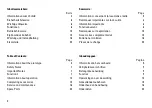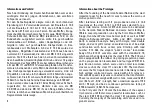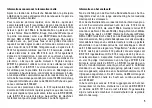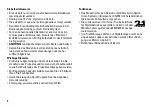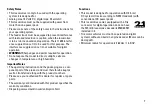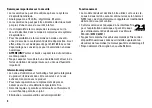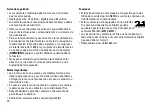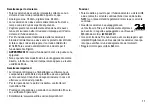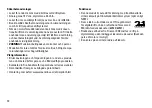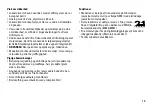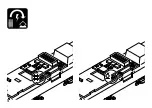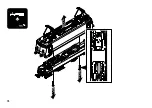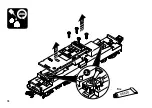
4
Information zum Vorbild
Nach der Gründung der Deutschen Bundesbahn war es das
wichtigste Ziel des jungen Unternehmens, den veralteten
Fuhrpark zu erneuern.
Für den Schnellzugdienst einigte man sich nach intensiver
Erprobung mit 5 Vorserienlokomotiven der Baureihe E 10.0
auf die Baureihe E 10.1 bis E 10.3, die ab 1956 in mehre-
ren Serien 379 mal von den Firmen Krauss-Maffei, Krupp,
Henschel-Werke (mechanischer Teil) sowie SSW (Siemens-
Schuckert-Werke), AEG und BBC (elektrischer Teil) an die
Bundesbahn ausgeliefert werden sollte. Ein geschweißter
Kastenaufbau mit Einfach-, später Doppellampen und Lüf-
tergittern ruhte auf geschweißten Drehgestellen in Kas-
tenbauweise mit Drehzapfen. Ab der E 10 288 wurde der
elegantere „Bügelfalten“-Lokkasten der E 10.12 auch bei den
normalen E 10 verwendet, die dann als BR E 10.3 eingereiht
wurden. Die E 10 erhielt auch den, bei den Vorserienlokomo-
tiven bewährten, Gummiringfeder-Antrieb und vier 14-polige
Fahrmotoren des Typs WB 372, die bei späteren Baureihen wie
z.B. der BR 111 und BR 151 Verwendung fanden. Die Transfor-
matoren, bei denen das erste Mal in Deutschland serienmäßig
eine Hochspannungssteuerung verwendet wurde, sind mit
Öl gekühlt, an denen ein Schaltwerk mit 28 Fahrstufen ange-
schlossen ist. Die 85 t schwere, 16.490 mm lange und maximal
150 km/h schnelle Lok hat eine Dauerleistung von 3.700 kW.
In den ersten Jahren war die E 10 das Rückgrat des Schnell-
zugverkehrs, bis schnellere, stärkere Loks wie die BR
E 03/103 und dann die BR 101 ihr den Rang abliefen. Heute
sind die restlichen verbliebenen Maschinen mehrheitlich im
Regionaldienst unterwegs.
Information about the Prototype
After the founding of the German Federal Railroad, the most
important goal for the new firm was to renew the worn out
motive power roster.
After intensive testing with 5 pre-production class E 10.0
locomotives, the class E 10.1 to E 10.3 was selected for ex-
press train service. A total of 379 units were to be delivered
to the German Federal Railroad and were built starting in
1956 in several production runs by the firms Krauss-Maffei,
Krupp, Henschel-Werke (mechanical part) as well as SSW
(Siemens-Schuckert-Werke), AEG, and BBC (electrical
part). A welded box-style body with simple, later double
lamps, and vent grills rested on welded trucks of box-style
construction with truck center pins. Starting with road
number E 10 288, the elegant “pant‘s crease” locomotive
body of the E 10.12 was also used with the standard E 10,
which was then designated as the class E 10.3. The E 10 was
also equipped with the rubber ring spring propulsion proven
on the pre-production locomotives and four type WB 372 14-
pole traction motors, which were used on later locomotive
classes such as the class 111 and class 151. The transform-
ers were the first regular production units in Germany to have
high voltage control and were cooled with oil. A relay sys-
tem with 28 speed steps was connected to the transformers.
These locomotives weighed 85 metric tons, measured 16,490
mm / 54 feet 1-3/16“ in length, had a maximum speed of 150
km/h / 93 mph, and had a continuous performance rating of
3,700 kilowatts / 4,961.78 horsepower.
In the first years the E 10 was the backbone of the express
train service until faster, more powerful locomotives such as
the class E 03/103 and then the class 101 supplanted them.
Currently, the majority of the remaining units are used in re-
gional service.
Summary of Contents for 22836
Page 1: ...Modell der Baureihe E10 12 22836 ...
Page 14: ...14 ...
Page 15: ...15 ...
Page 16: ...16 1 1 2 ...
Page 17: ...17 1 1 2 4 2 1 ...
Page 18: ...18 20h 1 2 3 Trix ...
Page 19: ...19 40h ...
Page 20: ...20 3 1 1 2 Trix 40h ...
Page 21: ...21 2 1 3 ...


